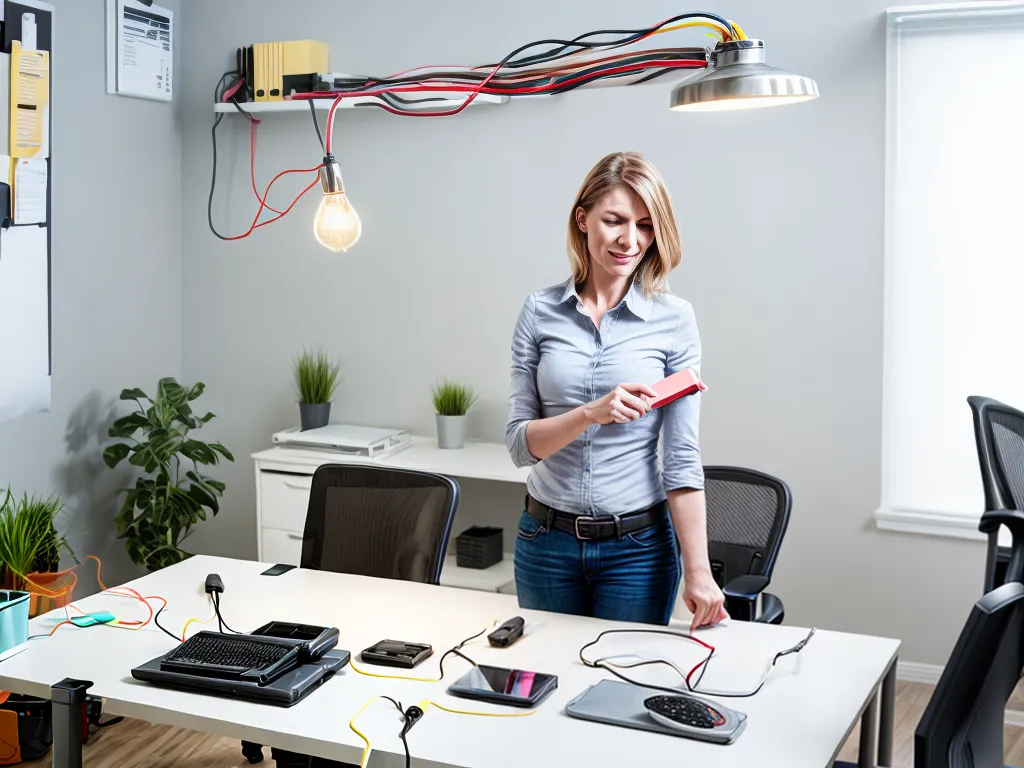
How to Rewire Your Office Without Hiring an Electrician
Upgrading your office's electrical system can be daunting, but with some planning and basic skills, you can rewire your office yourself and avoid the high costs of hiring an electrician. Here is a step-by-step guide on how I rewired my office wiring without professional help:
Assess Your Electrical Needs
The first step is to assess what you need to rewire and why. Make a list of all the things you want to plug in and any places where the existing wiring is insufficient. Some questions to consider:
-
Do you need more outlets for computers, printers, lamps, etc? Count how many devices you need to plug in.
-
Is the existing wiring overloaded and tripping your breakers? Check which circuits trip often.
-
Are any outlets or switches not working? Test them to see if they need replacing.
-
Do you want to add new lighting fixtures, switches, or outlets? Plan where they should go.
-
Do you need to upgrade from outdated two-prong to safer three-prong outlets?
Once you know what needs upgrading, you can plan the scope of the rewiring work.
Turn Off Power and Remove Existing Wiring
Safety first! Turn off power to the room you're working in at the main circuit breaker panel. Verify it's off by testing outlets with a multimeter or outlet tester. Then remove any existing outlets, switches and old wiring.
Be very careful not to touch any live wires while the power is still on. Cut power first before doing any wiring work.
Install New Electrical Boxes
Look at where your new wiring needs to go, and install new electrical boxes if needed. Plastic handy boxes are easy to install by cutting holes in drywall. Use a box supporting your desired number of outlets or switches.
Follow local building codes for proper box placement and sizing. Having accessible boxes makes wiring much easier.
Run New Wiring and Cables
Next, run the new cables between your circuit breaker panel and all the new outlet and switch boxes. I recommend using 12/2 NM cables with ground wire for 15-20 amp office circuits. Run cables through walls and ceilings and staple them securely.
Leave plenty of extra wire at boxes so you have room to work. Carefully follow color codes when wiring multiple circuits.
Connect Switches and Outlets
The fun part is installing and connecting the outlets, switches, and light fixtures. Attach the wires securely with screws, matching colors to terminals. Ground each box properly as well.
Install devices into their boxes and attach faceplates and covers. Take it slowly to ensure correct connections. Consult wiring diagrams as needed.
Connect Wiring to Circuit Breakers
With all the new wiring run and devices connected, you can now hook it up to the main circuit panel. Shut off the main before making any panel connections. Connect black hot wires to breakers, white neutrals to the neutral bar, and grounds to the ground bar.
Label all your new breakers clearly. Ensure connections are tight. Now replace the panel cover securely.
Turn Power Back On and Test
The last step is testing your work. Turn the main power back on and flip your new breakers on one at a time. Go around methodically checking each outlet, switch and light to ensure proper function. Plug in devices to further test.
If anything doesn't work, turn the power back off and carefully check connections and wiring. Troubleshoot until everything works - safety first.
Follow Building Codes and Get a Permit
Throughout this process, be sure to follow all electrical and building codes for your area. Get any required permits before starting. Inspectors will want to see you followed regulations when they review your finished work. Doing it right protects your office from electrical hazards.
While rewiring an office without an electrician takes effort and care, it can save thousands of dollars. With good planning and attention to safety, you can DIY electrical upgrades successfully. Just take it slow and double check everything - you don't want any wires sparking surprises!